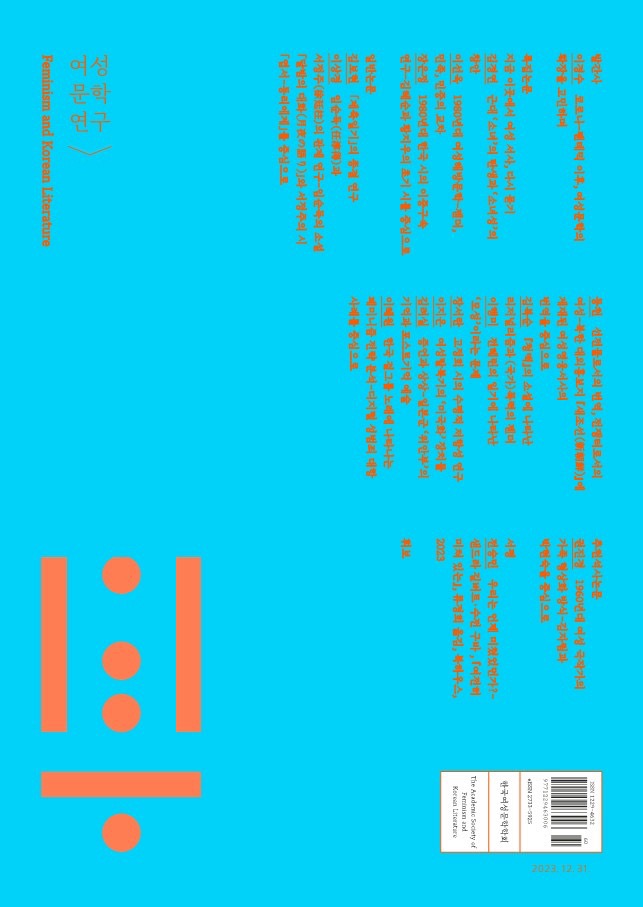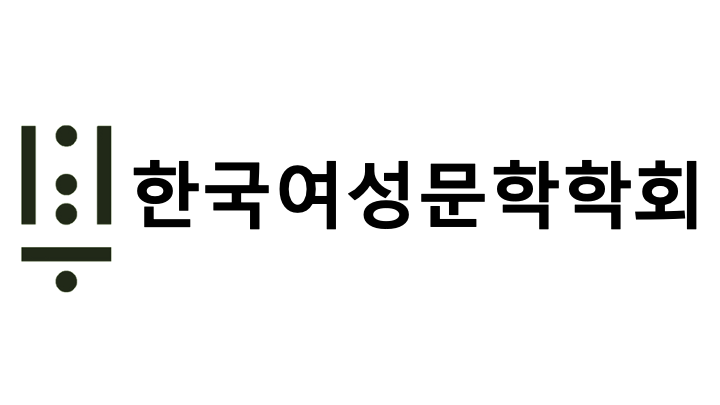- ENGLISH
- P-ISSN1229-4632
- E-ISSN2733-5925
- KCI
 ISSN : 1229-4632
ISSN : 1229-4632
1990년대 페미니즘 정치와 여성의 고통받는 몸 – 『베틀』, 『나눔터』, 그리고 『무소의 뿔처럼 혼자서 가라』를 중심으로
Feminist Politics and Suffering Bodies of Women in the 1990s – Focusing on Loom, Nanumteo, and Go Alone Like a Rhino’s Horn
초록
이 글은 1990년대 페미니즘적 전회를 재구성하기 위해 페미니즘 정치와 고통의관계를 ‘접촉’의 관점에서 바라볼 것을 제안한다. 특히 1990년대 초 성폭력 특별법이 제정되던 당시에 성폭력 개념 논쟁에 주목함으로써 타자의 고통에 페미니스트가 어떻게 반응하고, 해석하며, 번역하였는지를 세심하게 들여다보고자하였다. 이때 여성 단체들의 소식지인 『베틀』과 『나눔터』는 여성의 고통을 개념화·의제화·법제화하기 위해 증언 문화에 의존하였고, 이는 역으로 ‘여성의 고통받는 몸’에 부정적인 정동적 가치들을 축적하게 만들었다. 한편, 『무소의 뿔처럼혼자서 가라』는 페미니스트가 여성의 고통받는 몸과 접촉하는 장면을 빈번하게그림으로써 광의의 성폭력 개념을 제시하였다. 그러나 비평 담론의 차원에서 이텍스트는 ‘성폭력’ 특별법 제정 운동과 연결되지 못했다. 그럼에도 불구하고, 이작품에서 성폭력의 연속선을 재현할 뿐만 아니라, 고통에 대한 애착과 기만 사이에서 내적 갈등을 겪는 페미니스트를 형상화했다는 점은 주목을 요한다. 당대 페미니즘 정치와 연결되지는 못했지만, 이 텍스트는 여성의 고통받는 몸에 대해 문학이 할 수 있었던 역할은 죽음을 끝으로 받아들이지 않는 제스처를 보여주는 것이었음을 드러냄으로써 정치적 메시지를 제시하고 있기 때문이다.
- keywords
- 접촉, 여성의 고통받는 몸, 성폭력 특별법, 『베틀』, 『나눔터』, 증언문화, 정동적 가치, 『무소의 뿔처럼 혼자서 가라』, 성폭력의 연속선, 애착, 기만, 문학, contact, suffering bodies of women, Special Act on Sexual Violence, Loom, Nanumteo, culture of testimony, affective values, Go Alone Like a Rhino’s Horn, continuum of sexual violence, attachment, deceit, literature
Abstract
This treatise attempts to examine the relationship between feminist politics and suffering from the perspective of ‘contact’ to reconstruct the feminist turn of the 1990s. It pays particular attention to the debates on the concept of sexual violence during the enactment of the Special Act on Sexual Violence in the early 1990s, aiming to closely observe how feminists responded to, interpreted, and translated the suffering of others. During this time, the newsletters Loom, Nanumteo of women’s organizations relied on the culture of testimony to conceptualize, agenda-setting, and legislate women’s suffering, which in turn accumulated negative affective values around the ‘suffering bodies of women’. Meanwhile, Go Alone Like a Rhino’s Horn frequently depicted scenes of feminists contacting the suffering bodies of women, thereby presenting a broad concept of sexual violence. However, in the realm of critical discourse, this text was not connected to the movement for the enactment of the Special Act on Sexual Violence. Nonetheless, it is noteworthy that this work not only embodied the continuum of sexual violence but also portrayed feminists experiencing internal conflicts between attachment to and deceit of suffering. Although it was not connected to contemporary feminist politics, the text presents a political message by revealing that the role of literature could play regarding the suffering bodies of women was to show a gesture of not accepting death as the end.
- keywords
- 접촉, 여성의 고통받는 몸, 성폭력 특별법, 『베틀』, 『나눔터』, 증언문화, 정동적 가치, 『무소의 뿔처럼 혼자서 가라』, 성폭력의 연속선, 애착, 기만, 문학, contact, suffering bodies of women, Special Act on Sexual Violence, Loom, Nanumteo, culture of testimony, affective values, Go Alone Like a Rhino’s Horn, continuum of sexual violence, attachment, deceit, literature
- 다운로드 수
- 조회수
- 0KCI 피인용수
- 0WOS 피인용수
